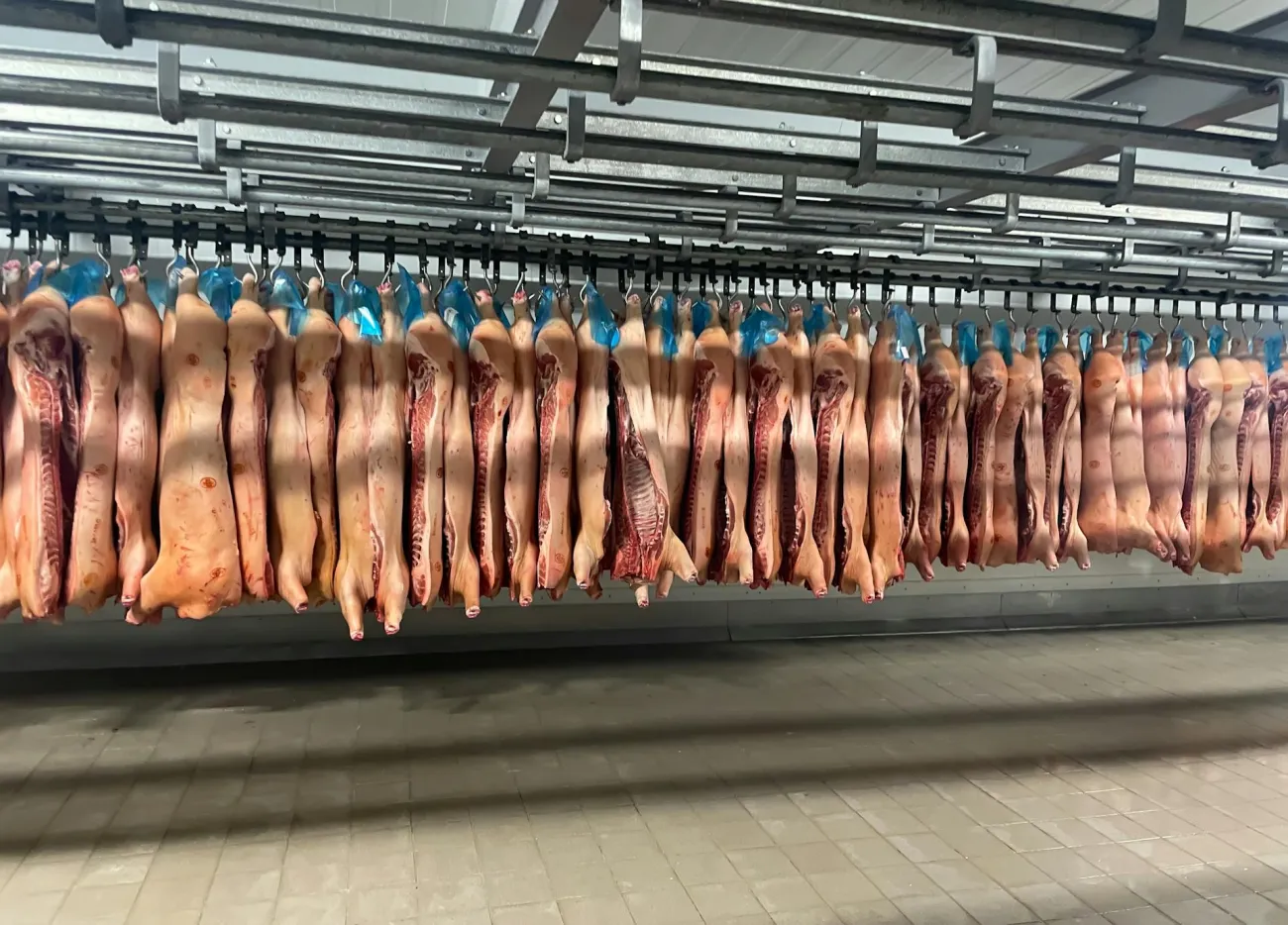This paper by FCRN member Emma Garnett finds that doubling the availability of vegetarian lunchtime meal options (from one-in-four to two-in-four) in university cafeterias increases vegetarian sales by 40-80%, with little change to overall sales and no detectable rebound effects (such as lower vegetarian meal sales at other meal times such as evening meals).

The figure below shows the results for two of the university colleges studied. When one quarter of the meal choices were vegetarian, roughly 20% of meals sold were vegetarian and 80% were not vegetarian. When half of the meal choices were vegetarian, roughly 35% of the meals sold were vegetarian and 65% were not vegetarian.

Image: Figure 2a, Garnett et al. Effects of vegetarian availability on vegetarian sales.
The figure below shows similar results from a third university college, where doubling vegetarian meal offerings from 25% to 50% leads vegetarian meal sales to rise from around 19% to 27% of total meals.

Image: Figure 3a, Garnett et al. Effects of vegetarian availability on vegetarian sales.
The study notes that dietary interventions that intend to reduce overall environmental impact can only be effective if they do not lead to rebound effects, such as causing greater meat consumption on other occasions. Most studies on dietary interventions do not account for rebound effects, according to the authors. In this study, no rebound effects were detected: total sales remained roughly constant whether or not more vegetarian options were offered, and offering more vegetarian options at lunchtimes did not lead to a drop in vegetarian sales at dinnertimes.
Note that both the Daily Mail and the Mirror misreport the findings of the study: they state that doubling vegetarian options reduces meat orders by 40-80%. In fact, the 40-80% figure refers to the percentage increase in vegetarian sales. Since meat sales started from a larger percentage, meat sales decreased by approximately 10-20% of their original value.
All three of the university colleges studied are part of the University of Cambridge. The study notes in order to test how generalisable its findings are, further studies are needed in other contexts, such as in other types of food outlets and in low- and middle-income countries.
Abstract
Shifting people in higher income countries toward more plant-based diets would protect the natural environment and improve population health. Research in other domains suggests altering the physical environments in which people make decisions (“nudging”) holds promise for achieving socially desirable behavior change. Here, we examine the impact of attempting to nudge meal selection by increasing the proportion of vegetarian meals offered in a year-long large-scale series of observational and experimental field studies. Anonymized individual-level data from 94,644 meals purchased in 2017 were collected from 3 cafeterias at an English university. Doubling the proportion of vegetarian meals available from 25 to 50% (e.g., from 1 in 4 to 2 in 4 options) increased vegetarian meal sales (and decreased meat meal sales) by 14.9 and 14.5 percentage points in the observational study (2 cafeterias) and by 7.8 percentage points in the experimental study (1 cafeteria), equivalent to proportional increases in vegetarian meal sales of 61.8%, 78.8%, and 40.8%, respectively. Linking sales data to participants’ previous meal purchases revealed that the largest effects were found in the quartile of diners with the lowest prior levels of vegetarian meal selection. Moreover, serving more vegetarian options had little impact on overall sales and did not lead to detectable rebound effects: Vegetarian sales were not lower at other mealtimes. These results provide robust evidence to support the potential for simple changes to catering practices to make an important contribution to achieving more sustainable diets at the population level.
Reference
Garnett, E.E., Balmford, A., Sandbrook, C., Pilling, M.A. and Marteau, T.M., 2019. Impact of increasing vegetarian availability on meal selection and sales in cafeterias. Proceedings of the National Academy of Sciences, p.201907207.
Read the full paper here or here (free access). See also the Foodsource resource What interventions could potentially shift our eating patterns in sustainable directions?




Comments (0)